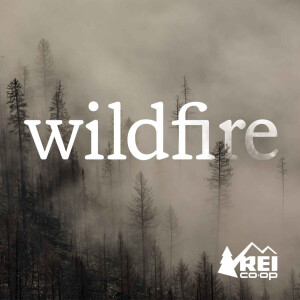
Are wildfires natural? And, if so, what purpose do they serve within the ecology of our forests? Has our recent history of suppressing and combating forest fires impacted the number and severity of wildland fires today?
In this episode of Wildfire, hosts Graham Zimmerman and Jim Aikman explore the natural place of wildfire in our forests, and how our government’s recent approach to wildfire management has been drastically different from the approach of Native Americans, who, for thousands of years, struck a more harmonious chord with nature.
They also continue the story of the human-caused Eagle Creek Fire, which, on September 4 and 5, 2017, exploded in size, threatening the small town of Cascade Locks, Oregon—"The Heart of the Columbia River Gorge”—with total devastation.
Key takeaways:
- 1:00 – The Eagle Creek Fire threatens Cascade Locks - “Save the town, and the pizza is yours for free.”
- 3:55 – “The day after the fire started, all 150 hikers emerged, triumphantly, from the forest.”
- 4:35 – We learn the fire is human-caused - “When we finally heard about…who started the fire, there was a whole wave of emotions that came with that first understanding.”
- 7:01 – “Are wildfires a natural phenomenon? And is this phenomenon as much a part of the machinery of our planet as the changing tides and cyclical seasons?”
- 10:11 – The fire impacts Portland - “We came out to a car covered in what looked like a light dusting of snow, but was in fact fallen ash.”
- 11:24 – Tom Closter discusses the geography and geology of Mount Hood and the Cascade Mountain Range
- 16:19 – Wildfire in the Cascades - “Understanding that the Columbia is a dynamic area is to… understand that this is not a place that is a stranger to huge, violent and cataclysmic events.”
- 18:50 – “When is fire ok? When is fire a disaster? Living with fire…means thinking about how we as a society interact with these large, natural events that we now treat as disasters…”
- 20:56 – “If this is normal, how’re we meant to deal with it?”
- 22:30 – “Now, almost two years after the fire, is this something that we can—or should—consider a normal occurrence?”
- 26:08 – Native Americans and wildfire - “How did people live with this ‘natural’ phenomenon before we had all of this technology and manpower to suppress and manage it?”
- 33:30 – The future of fire management looks to the past - “For thousands of years, fire was a friend and a tool, and something that improved the land…”
- 43:59 – Dorian Soliz – Superintendent of The Warm Springs Agency Wildland Fire Module “Folks don’t understand that wildland fire is a very important part of land ecology.”
- 46:30 – “Native people have been doing this for generations. It’s not new to any of the tribes across North America.”
- 51:33 – “The law of the land for the U.S. Forest Service has been to suppress and combat fires. But what has that done to our nation’s forests? And could that have anything to do with the number and severity of wildfires popping up in the headlines every summer?”
- 52:01 – Back at Cascade Locks - “The fire was about to grow by 600 percent in about six hours, with no signs of stopping. It was clear that this situation was going to get much worse before it got any better.”
- 53:26 – “The fire exploded beyond any projections as the wind picked up and spread the flames west, toward Portland.”
- 53:40 – “There was nothing natural about the start of the fire at all, nor nothing like the prescribed burns of the native tribes. It was simply started by a teenager with a smoke bomb.”
- 55:51 – “What was under threat was our idea of the Gorge. This place that was once in our minds perfect, pristine and unsullied.”
More Episodes
 2021-12-27
2021-12-27
 2021-12-16
2021-12-16
 2021-12-09
2021-12-09
 2021-12-02
2021-12-02
 2021-11-25
2021-11-25
 2021-11-18
2021-11-18
 2021-11-11
2021-11-11
 2019-09-27
2019-09-27
 2019-07-02
2019-07-02
 2019-06-25
2019-06-25
 2019-06-18
2019-06-18
 2019-06-11
2019-06-11
 2019-05-28
2019-05-28
 2019-05-14
2019-05-14
Create your
podcast in
minutes
- Full-featured podcast site
- Unlimited storage and bandwidth
- Comprehensive podcast stats
- Distribute to Apple Podcasts, Spotify, and more
- Make money with your podcast
It is Free
- Privacy Policy
- Cookie Policy
- Terms of Use
- Consent Preferences
- Copyright © 2015-2024 Podbean.com





